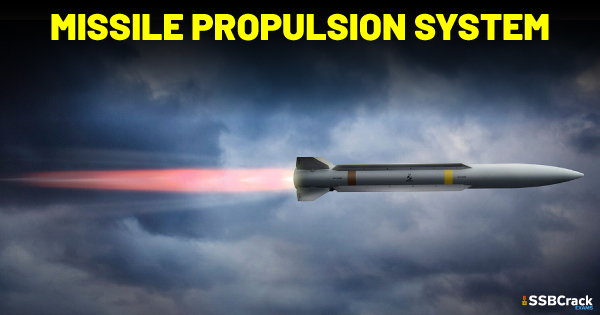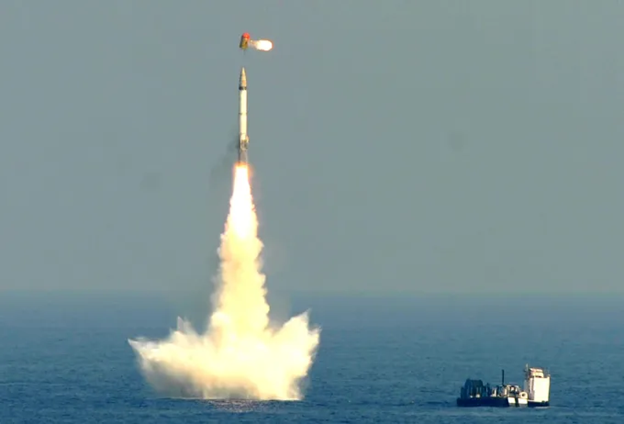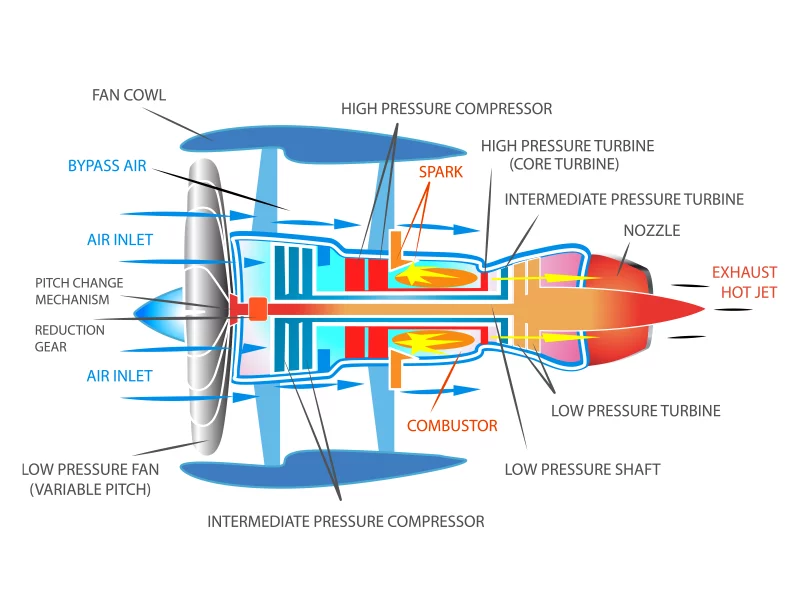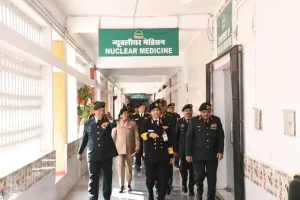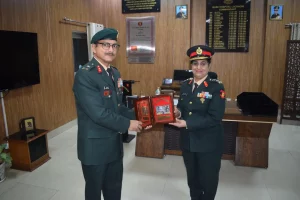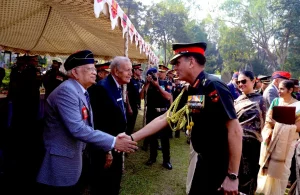Propulsion is the means of giving the body power to reach the required target. There is a large variety of missiles and therefore many different propulsion systems are used. The propulsion of a missile is achieved with the help of a rocket engine. It produces the thrust with help of very hot gaseous matter, called propellant.
How does a propellant work?
The hot gases are produced in the combustion chamber of the rocket engine by chemical reactions. The propellant is exhausted through a nozzle at a high speed which help’s missile to move in the opposite direction. It works on newton’s third law of motion. Different types of missiles are used for different purposes
Air-to-air, air-to-surface, surface-to-air, anti-ship and anti-tank missiles are the most common types of missiles used to attack distant military or strategic targets. Short-range, medium-range, intermediate-range and intercontinental ballistic missiles are the most common types of ballistic missiles. Missiles are made up of four system components: a guidance system, a flight system, an engine, and a warhead.
Types of Missiles
There are many types of missiles. They can be classified on the basis of their features like target, range mode of launching, guidance, aerodynamics,s, and propulsion.
On the basis of the target
- Anti-tank/anti-armor
- Anti-personnel
- Anti-missile.
- Anti-ship/anti-submarine
- Anti-satellite
Another classification of missiles is based on the method of launching
- Surface-to-surface-missiles (SSM)
- Surface-to-air missiles (SAM)
- Air-to-air missiles (AAM)
- Air-to-surface missiles (ASM)
On the basis of range, missiles can be classified as
- Short-range missiles
- Medium-range ballistic missiles (MRBM)
- Intermediate-range ballistic missiles(IRBM)
- Intercontinental or long-range ballistic missiles(ICBM)
Short-range ballistic missiles travel less than 1,000 kilometers, Medium-range ballistic missiles(MRBM) travel between 1,000–3,000 kilometers, and Intermediate-range ballistic missiles(IRBM) travel between 3,000–5,500 kilometers. Intercontinental ballistic missiles (ICBM) travel more than 5,500 kilometers.
Also read: Unfolding The Relevance Of AGNI Series Missiles From AGNI I To AGNI VI [Fully Explained]
Other types of propulsion, such as ionic, nuclear, and plasma, are currently being researched and developed, but no known missiles use them.
A chamber, a nozzle, and an igniter are all components of any propulsion system. In the chamber, the chemical reaction of propellant (typically a fuel and an oxidizer) produces gases. During this chemical reaction, the pressure of the gases is extremely high, and the product gases are extremely hot (2000-3500.C). These gases are then expanded in the nozzle and accelerated to high speeds. The shape and size of the nozzle are critical for the efficient operation of the propulsion system.
Propulsion System Jet Engines
The propulsion system’s function is to generate thrust. The force that propels a rocket forward is known as thrust. They operate under the law of momentum conservation. The thrust of a missile is produced by a rocket engine. Thrust is created by using a very hot gaseous substance known as a propellant.
A jet engine is a kind of reaction engine that shoots out a swift jet of heated gas, often air, to produce thrust through jet propulsion. The phrase “jet engine” normally refers to internal combustion air-breathing jet engine such as a turbojet, turbofan, ramjet, or pulse jet, however, this broad definition can also include rocket, water jet, and hybrid propulsion. Jet engines are typically internal combustion devices.
Also read: Top 10 Anti-Aircraft Missile Systems In The World
Types of Jet Engine
There are many distinct types of jet engines, all of which use the principle of jet propulsion to produce forward thrust.
Airbreathing
Jet engines that breathe air are frequently used to drive aircraft. Turbofan jet engines, which provide good efficiency at speeds just below the speed of sound, make up the majority of airbreathing jet engines now in use.
Turbine Powered
Gas turbines are rotary engines that use a flow of combustion gas to generate energy. They have a combustion chamber between an upstream compressor and a downstream turbine. These three essential parts are collectively referred to as the “gas generator” in airplane engines. Gas turbines come in a wide variety of configurations, but they all utilize some sort of gas-generating system.
Turbojet
A turbojet engine is a type of gas turbine that compresses air using an intake and a compressor (axial, centrifugal, or both), then mixes fuel with the compressed air and burns the mixture in a combustor before passing the hot, high-pressure air through a turbine and nozzle. The turbine, which derives its energy from the expanding gas traveling past it, powers the compressor. The engine creates thrust by converting the internal energy in the fuel to kinetic energy in the exhaust. Unlike the turbofan engine described below, all of the air absorbed by the inlet is passed via the compressor, combustor, and turbine.
Also read: Top 10 Anti-Aircraft Missile Systems In The World
Turbofans
In contrast to turbojets, turbofans have an extra fan up front that accelerates air in a duct away from the main gas turbine engine. The most common engine choice for medium- and long-range aircraft is the turbofan. At subsonic speeds, turbofans typically outperform turbojets, but at higher speeds, their enormous frontal area creates more drag.
Ram Compression
Both ram compression jet engines and gas turbine engines breathe air, and both operate according to the Brayton cycle. However, the way the incoming airflow is compressed varies between gas turbine and ram-powered engines. Ram engines exclusively employ air compressed through the inlet or diffuser, as opposed to gas turbine engines, which also use axial or centrifugal compressors. Therefore, for a ram engine to operate, there must be a significant starting forward airspeed. Ram-powered engines, which can have no moving parts, are thought to be the most basic kind of air-breathing jet engine.
If you liked the article do share it with your friends. Follow SSBCrackExams for more articles.
To crack the SSB Interview, You can join our SSB interview live classes batch and we recommend you to Enroll SSB INTERVIEW ONLINE COURSE. Trusted by thousands of defence aspirants.
Also Read:
- Difference Between India’s Agni V And India’s S-400 Vs China’s DF-41 Vs Pakistan’s Shaheen-III [Fully Explained]
- Why S-400 Missiles Systems Is A Game Changer For Indian Armed Forces?
- New Air-Launched Version Of Brahmos Missile Would Strike Targets At 800 Kms
- Top 10 Missiles Of Indian Armed Forces
- India Expanding Its Nuclear Arsenal From 156 To 160 Warheads Claims SIPRI
- Major Difference Between Brahmos V/S S400?
- Difference Between THAAD V/S S400? [Explained]
